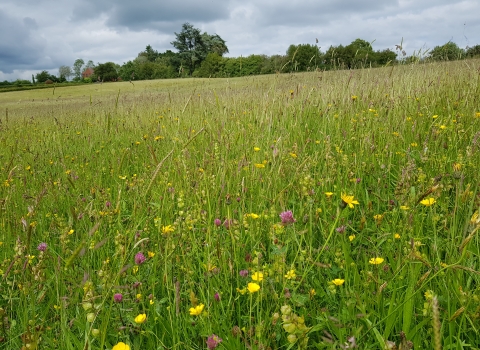Just 3% of the meadows that existed in the UK in the 1930s remain today, so restoration and creation of these species-rich habitats is a key aim of Natural Networks.
Several of our projects have involved meadow creation and restoration by seeding with native wildflowers and grasses. While these are all still in the early stages, this overview reflects on how things are progressing and offers some tips for future success. Given how complicated meadow restoration can be we can only give some broad recommendations here but there's lots more advice on offer from the Natural Networks Team.
Please do contact Sean and Jasmine for more help if you are considering restoring or creating a meadow of your own. we'd love to help!
Things to consider
Weather
Seeds require wet and warm conditions to germinate. As a rule of thumb, the weather will provide these conditions most reliably during autumn or spring when seedlings are less likely to be burnt off during drought and heat-stress, but equally are less likely to be frost damaged during cold snaps. Unfortunately, the weather of autumn 2019 and spring 2020 wielded a few extremes.
Too wet
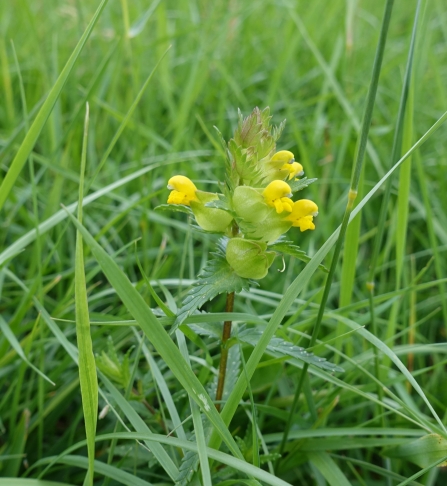
One meadow restoration project was carefully seeded in autumn only to experience the most prolonged period of flooding since 2007. Most seeds were either washed away downriver or rotted whilst submerged. Although we had little hope that any seed would have established on this flooded project, it was heartening to see a few yellow rattle plants had managed to take hold and flower in June 2020. These annual wildflowers parasitize the roots of competitive grasses, so are an extremely helpful ally to aid the restoration project.
Too Dry
Whilst autumn was very wet, spring gave us a period of hot, dry weather. For many projects, we observed that seeds which were partially shaded by trees and shrubs had successfully germinated whilst others exposed to full sun had failed.
Top Tip
For smaller meadow creation projects, watering the seedlings using soaker hoses has been possible during the very driest of weather. For others, the size of the meadows means that this is not possible. We are not too concerned however, so long as some seedlings mature and seed successfully then we can leave the meadow to establish and diversify naturally at its own pace after giving the initial boost to get started. Keeping-back some of the seed purchased for a meadow creation can be helpful just in case the initial work runs into trouble. It can then be used to 'top up' the site in the next season to help improve progress.
Weeds
Wildflower seed requires contact with bare soil to germinate. It is worth keeping in mind, however, that weeds such as broad-leaved dock, creeping thistle, fat hen and field bindweed love bare ground too so can be a problem with the early stages of meadow creation or restoration projects.
A young broadleaved dock is establishing on bare ground during the early stages of a meadow creation project. If numbers are significant, they will require control so that wildflowers are not out-competed.
Top Tip
Annual weeds such as fat hen are not too much of a concern, as they should lose their competitive edge as the sown wildflowers and grasses grow over the bare ground. Perennial weeds like docks and creeping thistle are more of a concern since they may compete more ably with wildflowers. For those which have established, the key action will be to remove flower heads before they set their own seed and create a more significant problem. Cutting down pernicious weeds at this stage also has the advantage of catching them just as they have put most of their energy into growth and flowering, meaning that they will struggle to recover from removal of their main stems.
Machinery
Traditionally, meadows are utility habitats which grow un-grazed and un-cut through summer. The tall grasses and flowers are then cut and baled with machines in mid-summer to produce a hay crop for livestock to eat over winter. Removal of cuttings is the single most important element of meadow management since removal of this biomass creates low fertility soil and an open sward in which a more diverse range of delicate wildflowers can thrive.
A small cut and collect sit-on mower is ideal for cutting smaller meadows and around/beneath trees. Here, one is being used to collect so-called 'green hay', which contains lots of seeds, for strewing on a nearby area. This can be a good way to enhance grassland without buying costly seed and, when cuttings from nearby meadows are used, it has the added advantage of ensuring a locally-native species mix, which is more likely to be suited to local climatic conditions and soil types than one from further away.
Top Tip
Our experience of local contractors having the machinery available to carry out this task has been variable. Some projects have instantly hit on an arrangement with a local farmer or contractor with the necessary cut and collect equipment, whilst others have struggled to source a contractor either due to lack of specialised equipment or because the small scale of a project makes it financially unattractive. Since experience has so far been variable, a priority action for new projects considering meadow enhancement is to line up a contractor first to carry out the management. In addition, the more voices that express interest in meadow management, the more likely that contractors will choose to invest in the necessary equipment.
In summary, when working with nature there are many factors which are beyond our control and some elements of a meadow enhancement project may prove harder than others. Keeping the following factors in mind can help manage expectations and keep a project on a good trajectory during its early stages:
- Plan to do things twice
- Control weeds
- Ensure you have the means for long term management
- Be patient
Meadow enhancement is a long-term project but is crucial to the conservation of this rare and declining habitat, which is not only a locally distinctive feature of our county but vitally important to both Worcestershire’s heritage and wildlife.
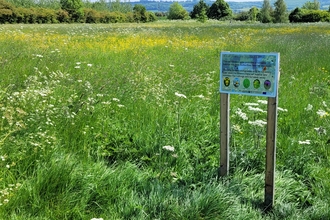
Natural Networks funding increased to encourage more wildlife-rich habitats
Natural Networks grants, available for projects which aim to create or restore wildlife-rich habitats, have been increased to cover 70%…
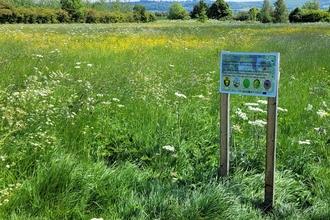
Natural Networks success
A project to connect habitats and increase the abundance of wildlife in Worcestershire is celebrating the securing of funding to extend…
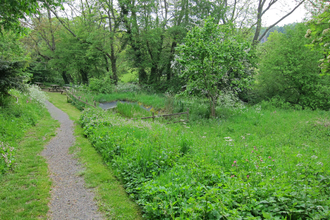
Wildlife and access improvements at The Knapp and Papermill
Work to make improvements for wildlife and people at a popular nature reserve will result in temporary path diversions and a one day…

